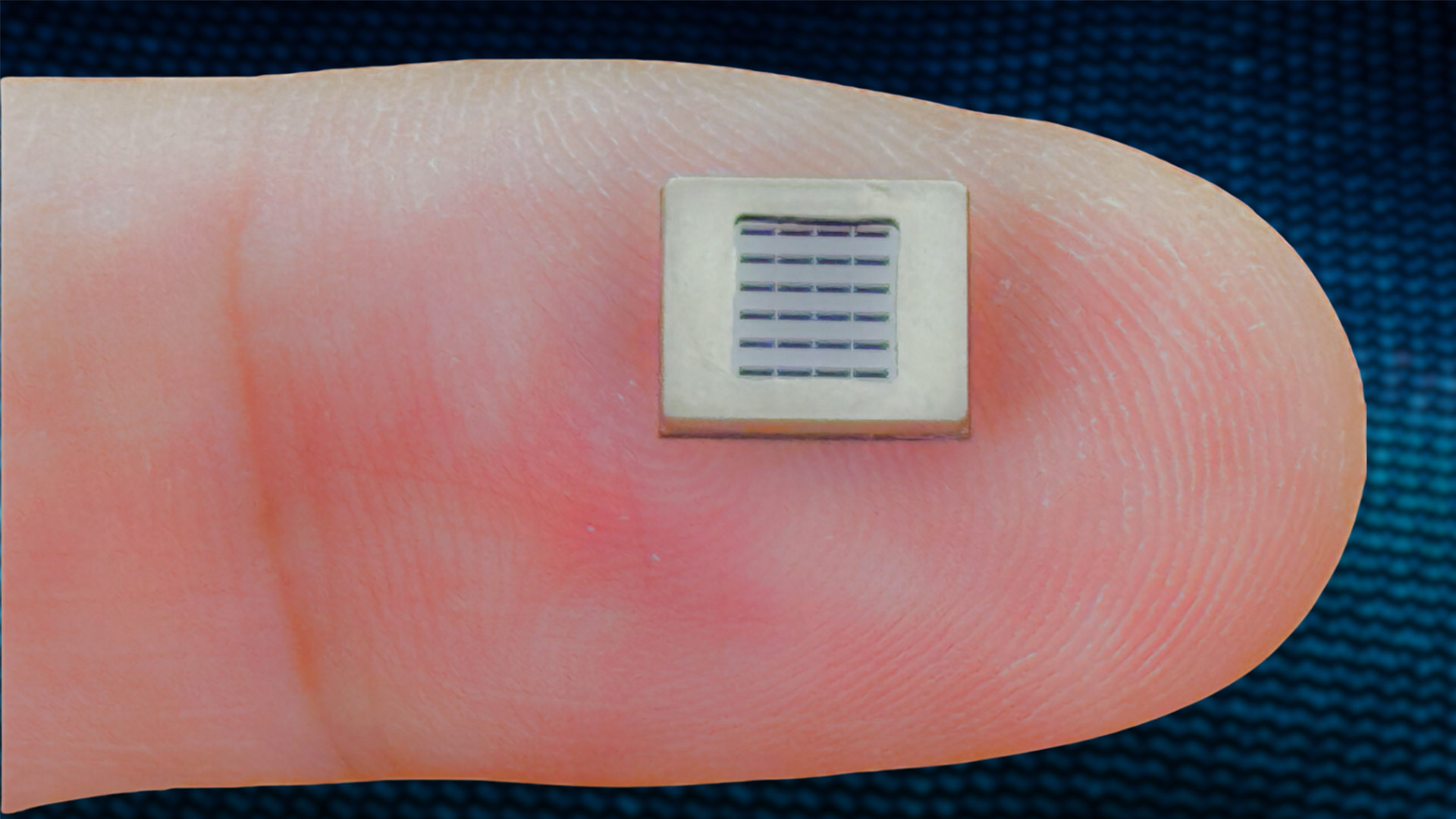Why solid-state drivers are the headphones tech you won't stop hearing about in 2024
Don't forget the name xMEMS

When it comes to the speakers inside your headphones, there’s a particular type of tech that dominates. Dynamic drivers are found in almost all headphones made today, because they're the most cost-effective to produce and work excellently.
There are other ways to fashion this key piece of tech, though, from balanced armature drivers – which you’ll find in headphones such as the 1MORE Quad Drivers – to planar magnetic drivers like those in the Audeze Euclid. But each design has its benefits and limitations. In the case of dynamic drivers – which are what’s inside all of the best headphones – their disadvantages are that they can be prone to distortion at high volumes and tend to be a bit larger than other driver types, owing to their cone- or dome-shaped diaphragm. Yet despite these drawbacks, they remain the most popular choice among manufacturers.
But that could all be about to change, because there’s an old type of speaker design that’s being completely reimagined thanks to a small semiconductor company in Silicon Valley called xMEMS Labs. It specializes in microscopic devices known as MEMS (short for microelectromechanical systems, and commonly used for the tiny microphones you need in headphones), and it’s these devices that are being paired with an existing type of speaker design known as piezoelectric drivers to make a revolutionary new way of making music in headphones. They’re called solid-state micro speakers, and I think you'll start hearing a lot more about them from here on.

What type of solid-state micro speakers has xMEMS developed?
- Gen 1: "Montara, the world’s first all-silicon, solid-state MEMS speaker which is now shipping in production earbuds, including the Singularity ONI."
- Gen 2: "Cowell (world’s smallest MEMS speaker) and Montara Plus (world’s loudest production MEMS speaker). Cowell is now shipping in production earbuds, including the Creative Aurvana Ace and Ace 2 and the Noble Audio Falcon Max. Products shipping with Montara Plus will be introduced at CES 2024."
- Gen 3: "Cypress, 40x louder than Gen 2 and the first MEMS speaker to achieve the low frequency sound pressure level (SPL) required for active noise canceling (ANC) earbuds."
- "All 3 generations of our MEMS speakers are complemented by Skyline, our solid-state DynamicVent, which enables active ambient control in earbuds and hearing aids to improve comfort and reduce occlusion effects while offering improved noise isolation."
We first started reporting on the world's first solid-state speakers in early 2023, but xMEMS has been around since 2018. During that time, it has been using MEMS to make miniature piezoelectric drivers, allowing it to make a comeback in the headphone world. This type of speaker design hasn’t been found in a pair of headphones for years. In fact, the last headphones that we're aware of that had piezoelectric speakers were the Pioneer SE-300s from the 1970s. Instead, you’ll more often find them in buzzers, watches and alarms due to their limited frequency response and tendency to vibrate physically.
That’s why xMEMS has been working at using solid-state MEMS materials, which are predominantly made out of silicon, to make a completely new type of piezoelectric speaker. The company has released five different prototypes over the last five years. The first was called the Montara, which is a full-range micro speaker that can produce several octaves of frequencies – completely removing the piezoelectric speaker design’s former limitations.
This transformative technological innovation was further expanded with the introduction of Cowell, its smallest MEMS micro speaker. It’s this prototype that’s specifically made it into commercial products such as Creative Lab’s Aurvana Ace and Aurvana Ace 2 earbuds as a tweeter alongside a legacy coil driver as the woofer. I’ve been able to try both headphones during a demo in London and found the sound quality to be exceptionally clear. Song Siow Hui, interim CEO of Creative, told me at the time that his company wasn’t the only manufacturer to be putting xMEMS speakers in headphones, but it was the first to ship. You can kind of tell that there wasn't a lot of time spent on the build due to the cheap-feeling plastic. But that might be why Creative can keep the price down to below $149 (approx. £120 / AU$285).

Since then, the Montara Plus has arrived, which is what xMEMS claims to be the world’s highest-sensitivity MEMS micro speaker. This prototype is more for bigger speakers, and smart or AR glasses, because of its added ability to function as a tweeter. In early 2023, xMEMS next unveiled the Skyline prototype, what it calls the “world’s first discrete solid-state MEMS DynamicVent”. It says that the Skyline micro speakers deliver the benefits of both closed-fit and open-fit earbuds, thanks to a valve that can be opened or closed.
Sign up for breaking news, reviews, opinion, top tech deals, and more.
In less than a year, xMEMS has also announced a fifth micro speaker prototype that can be used for the best active noise cancelling earbuds, called Cypress, which uses ultrasound air pulses to expand its dynamic range.
Interest has been overwhelming. The world’s leading consumer brands understand the value and benefits of solid-state solutions for their products. Once a solid-state alternative to a legacy mechanical device is available, it tends to gain majority share over time. The speaker has been one of the few remaining hold-outs, until now.
Joseph Jiang, CEO of xMEMS
Mike Housholder, vice president of marketing and business development at xMEMS, tells me that unlike the prototypes before it, Cypress is generating audio differently. "Ultrasound hasn't been an area of research since the 1960s, but the unique characteristic of ultrasound is that you can generate more low frequency pressure without more displacement… and without having to make a thicker chip, so to speak. It works on an ultrasound amplitude modulation principle, which is how we're able to generate that magic number north of 140dB."
Earbuds with the Cypress micro speakers will be unveiled at CES 2024, with production likely to begin in late 2024, which means you won't be able to buy a pair of ANC buds with these solid-state drivers until 2025 at the earliest, but we're looking forward to trying them at the trade show.
How are solid-state piezoelectric drivers different from dynamic drivers?
Before I go into how solid-state drivers work, I have to first explain how a traditional speaker works to help visualize how different they truly are. Considering that they’re the most popular type of speakers, I’ll focus on a dynamic driver design, which is made up of three main components: a cone- or dome-shaped diaphragm, metal coil and magnets.
The best way I can think of to describe what a dynamic driver looks like – and bear with me here – is to picture an ice-cream cone with a spiral staircase running down the centre of it. Now imagine that a magnet is at the bottom of the cone and that when charged with electricity, it causes the staircase to collapse on itself displacing air inside the cone, which would ultimately flings the ice-cream off the top because of the way collapsing the volume of the cone pushes the air out. This is roughly what a dynamic driver does to turn electricity into sound waves.

In the case of xMEMS’ solid-state drivers, Housholder tells me that they “have a thin-film piezo actuator. It's basically a piezo material that is integrated into the semiconductor process, and the material property a piezo is that when you apply a voltage to it, it bends. That is able to then push on a silicon diaphragm or a silicon membrane and move up and down to to create pressure and generate sound. So instead of a conventional coil and magnet where you run a current through a coil, it creates a magnetic field and it pushes a paper or plastic diaphragm up and down in a mechanical structure. This is just a single piece of of silicon that – with piezo in the middle of it – is able to push on the silicon and move it up and down to generate air pressure. This is the new way of building speakers.”
So we're still moving material to move air, but we're doing it in a much smaller space, with much less motion.
Solid-state speakers could be key to allowing spatial and hi-res audio to reach their full potential

Solid-state speakers are coming at an interesting time in the audio industry. The biggest innovations are about the move from stereo to spatial, and the expansion of CD quality and hi-res to deliver more detail and resolution, but as Housholder points out, we're trying to make all these changes with century-old coil speakers.
The suggestion is that we won't ever reach the full potential of these without some hardware changes, much like what experienced with the introduction of 4K. We needed to upgrade the screen tech to take advantage of this higher resolution, and xMEMS would argue that the same thing is true for speakers – the next big step might be the move away from a mechanical speaker design to a semiconductor one.
"The mission at xMEMS is to transition consumer audio products to solid-state MEMS speakers, which offer improved sound clarity and fidelity as well as superior component reliability and consistency versus the legacy, century-old coil and magnet mechanical speaker architecture," Joseph Jiang, CEO of xMEMS, says.
Solid-state tech has already transformed the consumer electronics industry, going back to the transistor, but in more recent decades with most computers' storage and microphones now made in this way. One of the remaining holdouts is the speaker, but that might not be for much longer.
You might also like

Amelia became the Senior Editor for Home Entertainment at TechRadar in the UK in April 2023. With a background of more than eight years in tech and finance publishing, she's now leading our coverage to bring you a fresh perspective on everything to do with TV and audio. When she's not tinkering with the latest gadgets and gizmos in the ever-evolving world of home entertainment, you’ll find her watching movies, taking pictures and travelling.